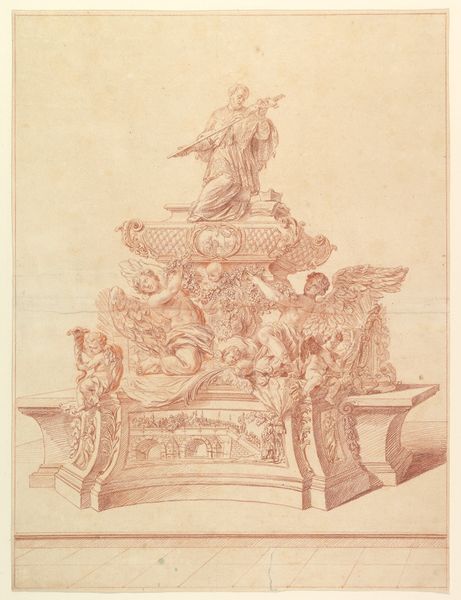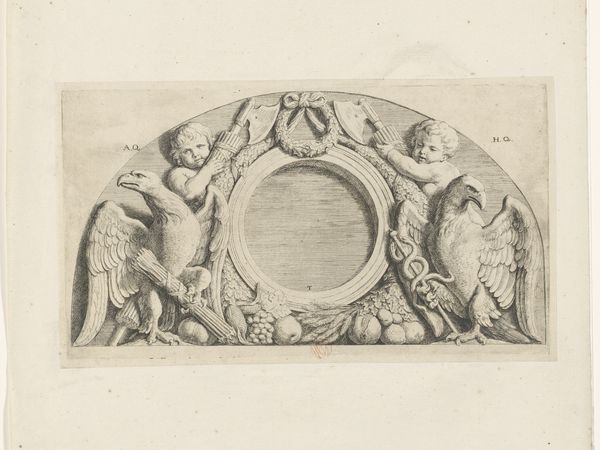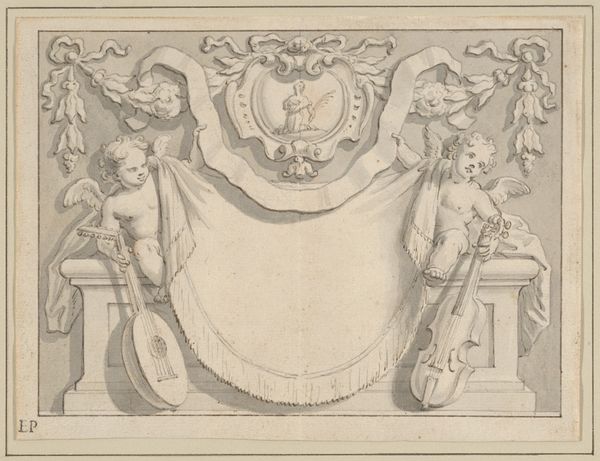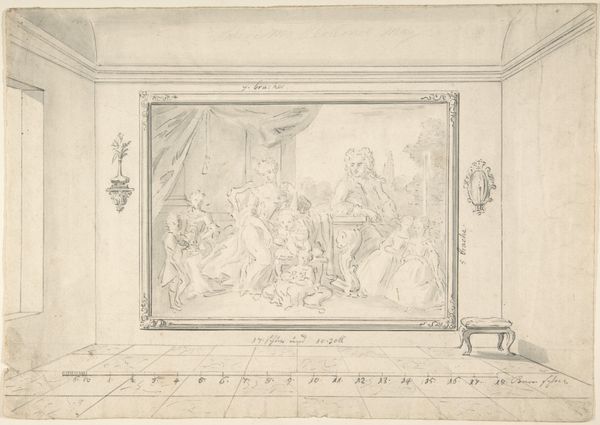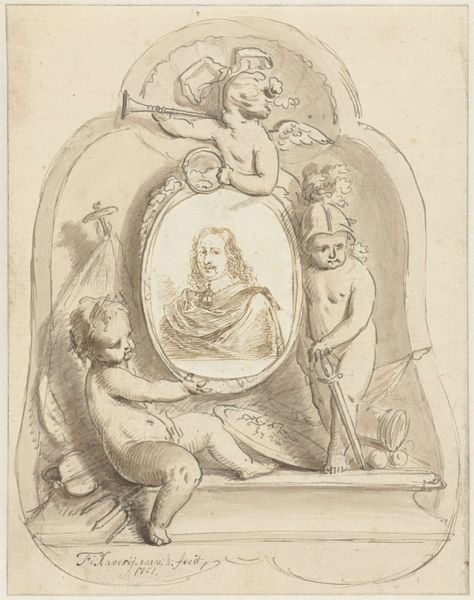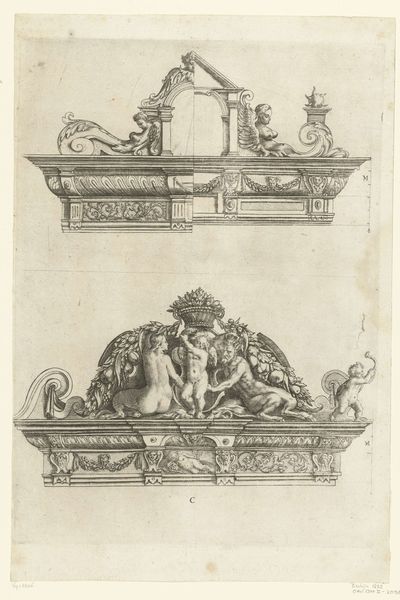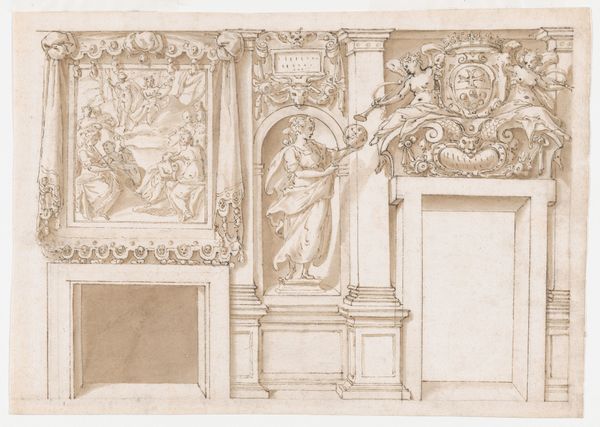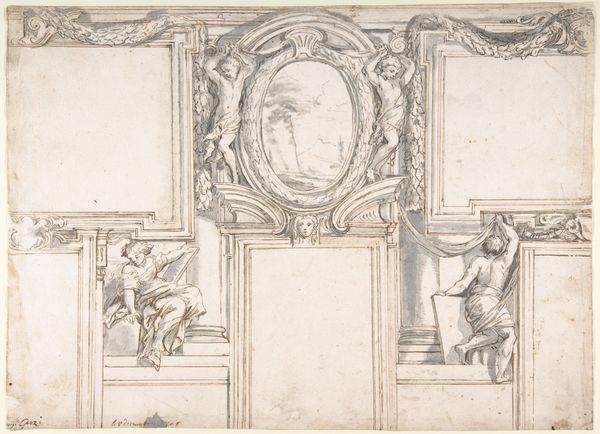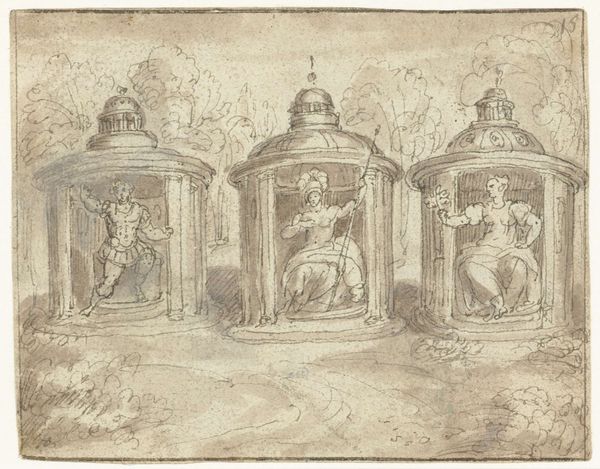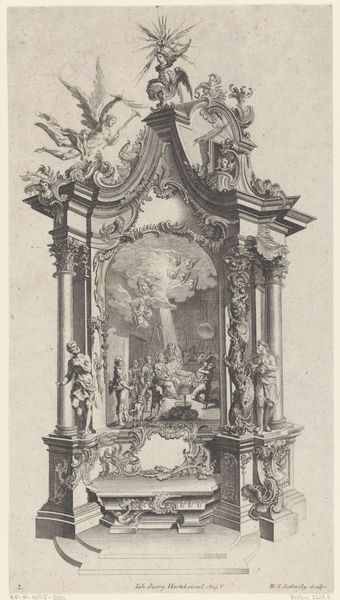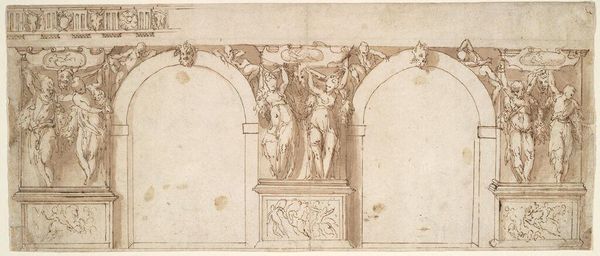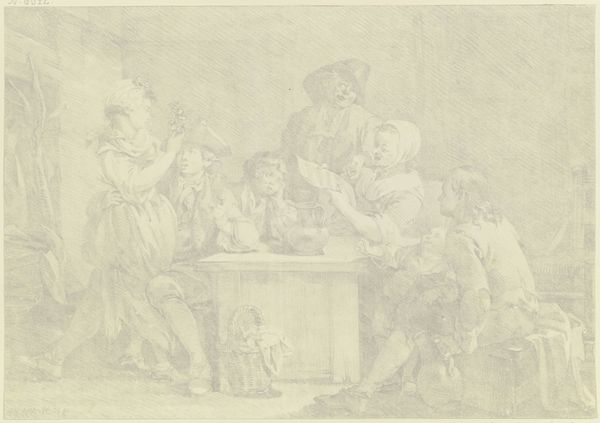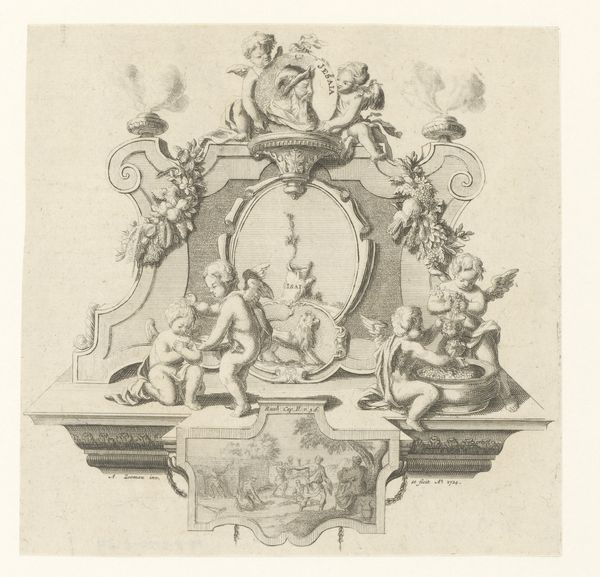
drawing, pencil
#
portrait
#
drawing
#
baroque
#
pencil sketch
#
pencil
#
genre-painting
Dimensions: height 208 mm, width 600 mm
Copyright: Rijks Museum: Open Domain
Editor: Here we have Cornelis Holsteyn’s "Personen op een balustrade met festoenen," created between 1633 and 1638. It’s a pencil drawing. It feels almost like a stage, with all these figures lined up. How do you interpret this work? Curator: For me, it is important to examine how marginalized communities were depicted and what power dynamics were present in society at this time. I find myself wondering, what social strata did these individuals occupy? Are there gendered performances at play within the composition? Editor: Gendered performances? Curator: Consider the active and passive roles assigned in baroque era art, not to mention class. Where do we see elements that reinforce these hierarchies, or, perhaps, challenge them? The presence of music-making implies leisure, but to what extent was this leisure equitable across gender and class lines during the 17th century? What can this pencil drawing tell us about access, power, and societal expectations? Editor: So you're suggesting that it is not merely a decorative scene but a snapshot, reflecting societal dynamics. Curator: Exactly. Holsteyn, intentionally or not, captured a tableau vivant imbued with the complexities of its time. It encourages us to delve deeper into intersectional themes present in that historical context. Editor: That reframes how I see the artwork; the performance on the balustrade is only part of a wider play. It highlights how art doesn't exist in a vacuum. Curator: Precisely. By understanding art through the lens of identity, gender, race and politics, we create a more comprehensive and nuanced dialogue. Editor: I’ll definitely keep that in mind when looking at art from now on. Thank you for opening my eyes!
Comments
No comments
Be the first to comment and join the conversation on the ultimate creative platform.
